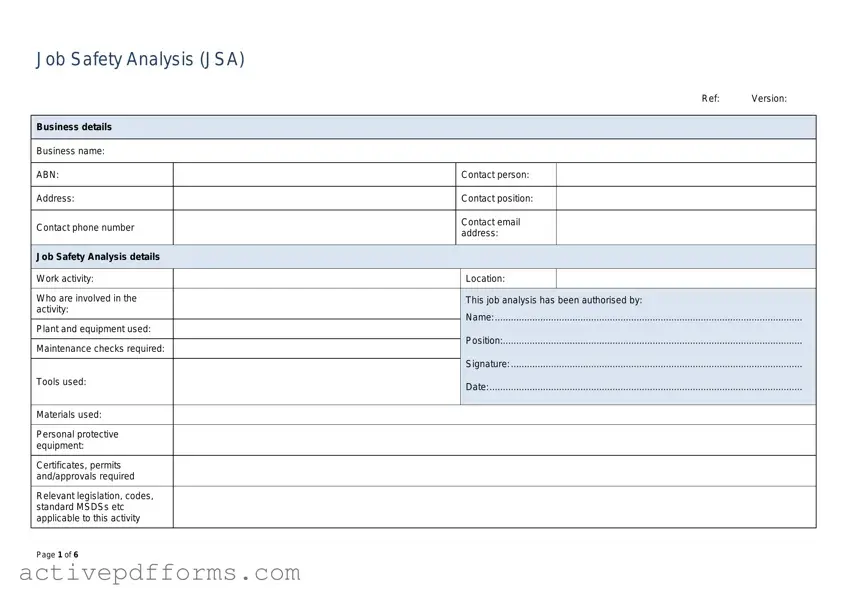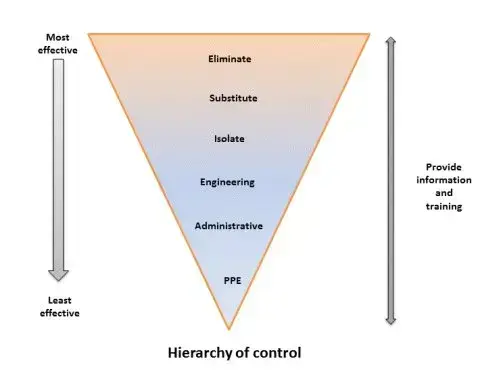The Job Safety Analysis (JSA) form serves as a crucial tool in identifying hazards associated with specific job tasks, with the goal of reducing and controlling workplace risks. This comprehensive document not only outlines the details of the business, such as the name, contact person, and addresses, but also dives deep into the specifics of the work activity, including the location, individuals involved, and the equipment used. A significant part of the form is dedicated to risk assessment, employing a risk rating table that considers the likelihood and consequence of potential hazards, thereby providing a structured method to evaluate the severity of risk from "Low" to "Catastrophic". Following risk assessment, the form guides through risk control strategies employing the hierarchy of control — from elimination of hazards to substitution, engineering controls, administrative controls, and, as a last resort, the use of personal protective equipment (PPE). Additionally, the form mandates the documentation of action steps to control risks, assigning responsibility to specific personnel to ensure accountability. This document not only emphasizes the importance of a proactive approach to hazard identification and risk mitigation but also underscores the necessity of continuous review and adherence to relevant legislation, codes, standards, and Material Safety Data Sheets (MSDSs) pertinent to the activity in question.




 How to control risks***
How to control risks***
 How to control risks***
How to control risks***
 This job safety analysis has been developed through consultation with our employees and has been read, understood and signed by all employees undertaking the works:
This job safety analysis has been developed through consultation with our employees and has been read, understood and signed by all employees undertaking the works: